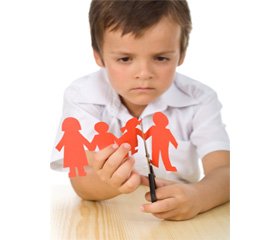Журнал «Здоровье ребенка» 6 (57) 2014
Вернуться к номеру
Depression and the suicidal behaviour bound by at children and teenagers, modern views and the state of the problem
Авторы: Pypa L.V., Rymsha S.V., Svistilnik R.V., LisitsaJ.N. - Vinnitsa national medical university named by N.I.Pirogov (Vinnitsa, Ukraine)
Рубрики: Педиатрия/Неонатология
Разделы: Справочник специалиста
Версия для печати
Summary. The suicidal behavior bound by it and social value of this disease with its consequences is lead the state-of-the-art review of the world literature in which the etiology, modern views on a pathogenesis are clarified epidemiology, clinic, diagnostic criteria of depressive distress at children and teenagers, and also. Key references on treatment and prophylaxis of depression at children and teenagers according to last the European and American references based on a position of demonstrative medicine are surveyed.
Introduction. Emotions play an important role in human’s life, providing an integrated assessment of external and internal stimuli in terms of their biological significance for the individual. Disruption of the normal functioning of the mechanisms of emotions in a number of mental disorders, especially depression - disrupt purposeful adaptive behavior [7].
Depression - a disorder that is characterizedby abnormally low mood, with negative, pessimistic assessment of themselves, their position in the surrounding reality and the future [7]. Also, depression is accompanied by disturbances of sleep patterns, emotional and physical areas of the body and is often associated with prolonged and severe course, increased risk of suicide, and in some cases the development of psychotic symptoms [9].
Over the past decade it is marked a significant increase in the number of people suffering from depression, especially by children and adolescents [1].
EpidemiologyIndicators of depression are gradually increasing to pubertal age. In 13 years, the annual rate of depression is 1-2% and up to 15 years increasing to 3.7 %. Also it is determined that approximately 28 % of adolescents are likely going to have the episode of major depressive disorder(MDD) till the age of 19 years [ 10, 16 ].In childhood (under 10 years), the ratio of boys and girls among patients with depression is about the same. However as approximation to pubertal age , gender indicators change towards dominance of girls, and in the range of 12-13 years, the proportion of girls is increased doubled [5, 16].
EtiologyMDD is a complicated contravention, whichis caused by the interaction of biological, genetic factors and environmental factors [14].
Environmental factors. The risk of depression is increasedin children with negative parent’s attention to the prospects in there, emotionally closed or do not give warm feelings for the child, using a strict physical discipline using critical communication style in life.
Negative life events. In the 11-year-long study of Ge X. et al. (2006) it was found that children from families with divorced parents have higher rates of depression than children with full families.
Social Support. The presence of friends and friendships with peers quantitatively and qualitatively reduces the possibility of being lonely , whereas no friends leads to loneliness , which in turn increases the risk of depression [ 10].Comorbidity.
Diagnosticfeatures are equivalent to depressive symptoms in children, we propose to consider somatic symptoms: abdominal pain, headache, loss of appetite, difficulty in learning, enuresis, enkoprez. Forteens,equivalents of depressive symptoms often considered aggressive and asocial behavior and negativism behavior (Angold A. Castello, E. 1998, Pine DS, 1999, Weissman M., 1999). Clinical signsof typical depressionappear in 6-9 years.
Pathogenesis.There are numerous theories of depression, the components ofwhich are genetic, biochemical and endocrine,psychological, social and so on. Approximately 30% of the risk of VDR in children is a genetic factor [17]. Due to the fact that numerous pathophysiological aspects of depressive disorders to date have not been studied to the end, it is proposed to consider depression as a Multisystem disorder with multiple pathogenetic mechanisms [2].
Clinic. In general, the clinical picture of depression includes both positive (boredom, anxiety, suicide, hypochondriasis ideas) and negative (apathy, anhedonia, fatigue and depersonalization) symptoms. In this case, the main manifestations of depression is boredom - the feeling of sadness, despair, hopelessness, emotional inhibition; decrease in motor activity until adynamia; ideatory inhibition of focusing on their negative feelings is called Triad Krepelinha[8, 29], anxiety and apathy.Separately it is determined the " masked depression" (depression without depression), which is appeared mainly by autonomic dysfunction , simulating the pathology of the cardiovascular, respiratory system, digestive system, chronic pain syndromes , sleep disorders, pseudoneurologic disorders pseudodementia. Described psychopathological "masks" of the depression as intrusive conditions, anxiety-phobic, somatoform disorders, and others [7, 8]. However, "masked depression"- it is rather the result is not very careful examination of the patient, as the active questioning can determine all the signs of depression. Depression can be a symptom of bipolar affective disorder and interlaces with symptomsof mania (abnormally elevated mood) . Repeated episodes of depression can be diagnosed the recurrent depressive disorder [8].

